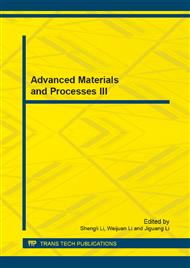p.957
p.962
p.966
p.973
p.979
p.985
p.990
p.996
p.1000
Reliability Analysis of Alumina-Based Ceramic Cutting Tool's Wear Life by Saddle Point Approximation
Abstract:
Under continuous cutting conditions, the reliability of alumina-based ceramic cutting tools wear life with abrasion wear was discussed extensively. An ultimate state equation of alumina-based ceramic cutting tools wear life was proposed according to stress-strength interference theory. Based on the premise that the probability distribution of random parameters has been known, the fracture toughness KIC and the hardness H which obey Weibull distribution were transformed into normal distribution by means of the equivalent normal distribution method, and then the reliability of alumina-based ceramic cutting tools wear life was analyzed by saddle point approximation method. The probability density function and cumulative distribution function of the ultimate state equation were accurately and quickly obtained by way of saddle point approximation, as a result, the saddle point approximation method was proved accurate with high computing speed in comparison with the Monte-Carlo method. Therefore, the application of the saddle point approximation method developed the reliability analysis theory of alumina-based ceramic cutting tools wear life.
Info:
Periodical:
Pages:
979-984
Citation:
Online since:
September 2013
Authors:
Price:
Сopyright:
© 2013 Trans Tech Publications Ltd. All Rights Reserved
Share:
Citation:


